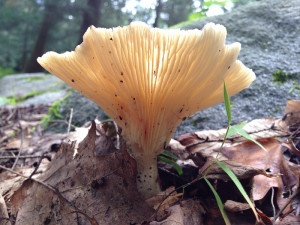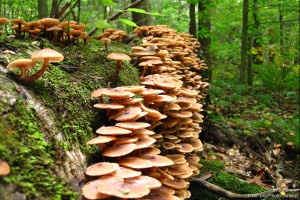We have much more to do and your continued support is needed now more than ever.
The Discovery for the Fungi-Sphere: How Mushrooms are Changing the World’s Winds
Guest post by Drew Hendricks
For centuries humankind has explored the mystery and power of fungi, a vast class of organisms that have been culturally, spiritually, ecologically, biologically, and gastronomically significant throughout the ages.

Mushroom reproduction 101
We love hunting them in the woods, eating them on our pizza, and there’s no doubt they’re important to the life cycle wherever they grow, but new research suggests that mushrooms may even have an impact on the air we breathe. Here’s what scientists knew: larger fungi can be divided into two reproductive groups. The first, those that drop spores (also known as Basidiomycetes) have been understood to spread their seed via small cells located on various parts of the mushroom, often the gills underneath its cap, which fall like acorns from a tree and travel on the wind. And the second, those that shoot spores (called Ascomycetes) which mature within small sacs.

But can mushrooms make wind?
Until now, scientists assumed that of these two groups, the latter was by far the more active fungi type, and that the former group was forced to rely on unpredictable weather patterns for successful travel and eventual survival. But new research indicates that mushrooms create their own air flow or “wind.” How? By means of the well-understood process of evaporation.
Life’s a breeze
Here’s how it works: When the moisture on a mushroom evaporates the mushroom cools (this is because heat energy is consumed when liquid becomes vapor). Water vapor is less dense than air, and warm air is less dense than cold air. When water evaporates around the mushroom, there is an abundance of both. As the air cools, it flows, and disseminates—for all intents and purposes, creating wind. This small boost is all that those tiny mushroom spores need. They can travel nearly 4 inches in any direction (even skyward) on these miniature gales.
For the mushroom, this act requires nothing more than being itself. By design, mushrooms release their moisture instead of trapping it, and the release of moisture is all that’s necessary for the process to occur. This is masterful genetic selection for an organism that spends its days wedged between fallen trees, and under piles of leaves, ferns, and other undergrowth. The ability to blow spore disseminating breezes greatly improves the mushroom’s chances of finding an equally viable location for regeneration, sending spores away like you might ship grown children off to college, providing space and freedom without flinging them outside the safety-zone.
Studying spores
Take a hike through the woods at night, and you’ll see awe inducing clouds of mushroom spores in your flashlight beams, but that viewpoint was a little too simplistic for scientists from Trinity College in Hartford, Connecticut who instead employed the use of laser lights and cameras to visually capture the way mushroom spores disseminate. They married the collected images to the data (mushroom temperatures and water loss) in order to demonstrate and illuminate the complete process. As they discovered, a wide range of fungi are verified windmills, not least of all the Amanita muscaria, a hallucinogenic varietal. This discovery suggests something even more profound, that all fungi which form mushrooms (remember the fungus is the organism, the mushroom is technically its reproductive organ) may be capable of generating little breezes of their own. That’s a lot of cool air.
The future is fungal
Despite our longstanding fascination with fungi, these organisms remain—by-and-large—a biological mystery. As of yet, scientists can’t even pinpoint how many species exist, and those who attempt to estimate generally find themselves on a broad spectrum: anywhere from 600 thousand to 6 million.

Fungal enzymes are essential to the decomposition of plant matter, and may even prove useful in efficiently converting industrial bio-waste. Fungal enzymes are already used every day to reduce the pollution that results from various industrial processes such as producing textiles and paper, and right now research is underway which aims to inoculate future crops against drought and other hazards of climate change using fungi.
The more scientists learn about the processes by which fungi survive and thrive; fungal RNA, physiology, and biodiversity, the sooner they will be able to maximize the benefits of applying fungal solutions to real world problems. The potential of such research is just now beginning to be understood, and as time passes the study of mushrooms may just join the ranks of other significant world-changing sciences. Warn your local recycling center, mushrooms are on the rise.





















